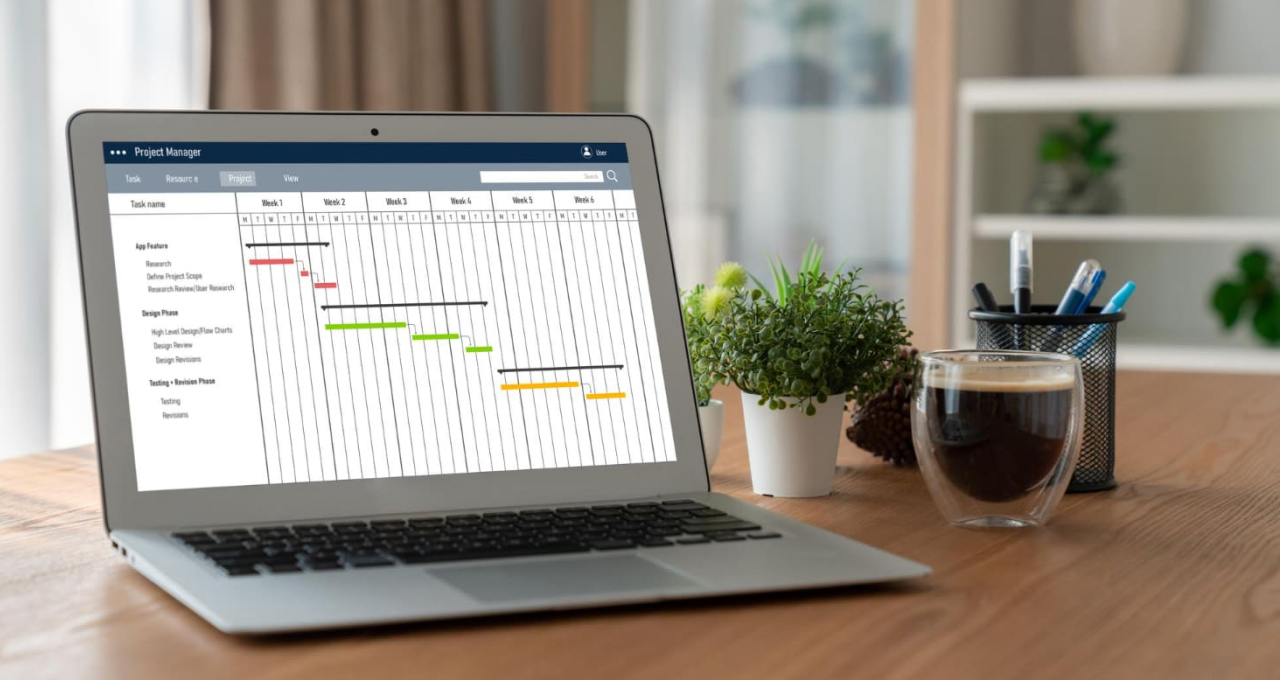What is a Gantt Chart?
Project management is a herculean task that needs continuous monitoring of different aspects of a project. If we believe the stats, 37% of projects fail because of a lack of management at different stages. This is where the use of the Gantt Chart helps maximize the success rate of project management.
A Gantt Chart is a project management tool to plan and schedule projects of all sizes. More simply, it is a visual overview of a project’s timeline. On the left side are the tasks or activities planned to accomplish and along the top is a suitable time scale. Each job or task is denoted by a bar and the length of the bar shows the start, duration, and end date of that specific job.
A Gantt Chart gives a view of projects developing versus project dashboard, which assists the administrators in knowing what is happening right now.
Gantt charts give you a brief of the status of the project by helping you know which task is yet planned to start and end and how long it should take and make necessary decisions based on it.
By reviewing such pivotal information you shall be able to pinpoint the task dependencies and the number of activities planned each day. Delay, if there are any, A Gantt chart in project management will help highlight that too so that you can hire additional resources to meet deadlines.
What are the Benefits of Using Gantt Chart
The most significant advantage of including Gantt charts is that it helps you draw a clear and easy representation of the project timeline. While it may not sound obvious to some, it at least saves your time in reading the long data when you want to conclude what job has been done to date and what tasks require your attention.
Gantt charts can be shared with internal and external people associated with the project to help them learn about the key jobs that need closer attention, map out milestones, and check when the project is due to end.
Users and managers can quickly review the expected versus actual progress of the project in a real-time environment. If needed, managers may employ external resources when tasks are falling behind.
Some other benefits of using Gantt charts are as follow:
- It is one of the innovative ways to plan initial project scheduling; know who is going to do what tasks and how long each task should take to get done.
- Highlighting dependencies will ensure tasks are done as planned, and in the right order. Overall this may help you understand how much it is going to cost you if you reschedule any task.
- Having a visual representation of tasks or activities will keep the work spirit alive because their work is being monitored.
- Let you analyze the critical path if you change priorities or tasks and how this is going to affect your project end date.
- Build a work culture that is based on teamwork. Each employee can know how their work fits in and what others are doing.
- The feature to share Gantt charts with key important people involved in the project increases the sense of accountability.
- When your team completes a specific task or major tasks, appreciating them wins their trust. Remember, a motivated workforce adds to productivity and improves operational capacity.
- Gantt charts are a great way to plan ahead of a task. You can always analyze the progress of the project and meet deadlines.
- Successful project management means happy and satisfied customers. It improves brand reputation without having to pay for marketing.List Item
How to use Gantt Chart for Your Project Management?
For project management, the underlying reason to use the Gantt chart in project management is to map out which tasks can be done in parallel or standalone to complete the project on time. If we can use this to an advantage, we can trade-off between the work and cost and the time scale for the project. Additionally, required resources can be employed or deployed to maximize the output.
To build a chart you need to know the individual tasks required to complete the project on time and the estimated time of each task. Based on the collective information, project managers can create a relationship between each task and timeframe for project completion.
The best way to make it work for project management is by creating a daily, four-week view. A view for the next four weeks fragmented out day by day allows everyone to see tasks in the future. Stretching it to more weeks distracts the workforce and leads to unnecessary burdens. Teams can view their individual task or the entire project if they need so at the same time.
Once the timeline is framed and the tasks are hit, make sure to review the Gantt chart with your team once a week to ensure smooth working. This review will help you discuss roadblocks, the availability of resources, and upcoming tasks for the following week.
Why Avail Ignatiuz’s Project Management Services?
Ineffective and unplanned project management often leads to unnecessary expenditure on resources and time. Ignatiuz’s project management services provide your organization with consultancy services to make sure that your project management experience is not overwhelming. We work together with your team to ensure that projects are timely and accurately delivered within your budget constraints.
Whether you want to use our project management tools as a part of your customer’s integrated management team or as a single contact point, we can help you achieve your business objectives using our project management consultancy services. Gantt Charts is one such effective tool to achieve transparency and seamless communication between the different aspects of project management.
Check out Ignatiuz – Your Trusted Project Management Partner to make your next project a success.
